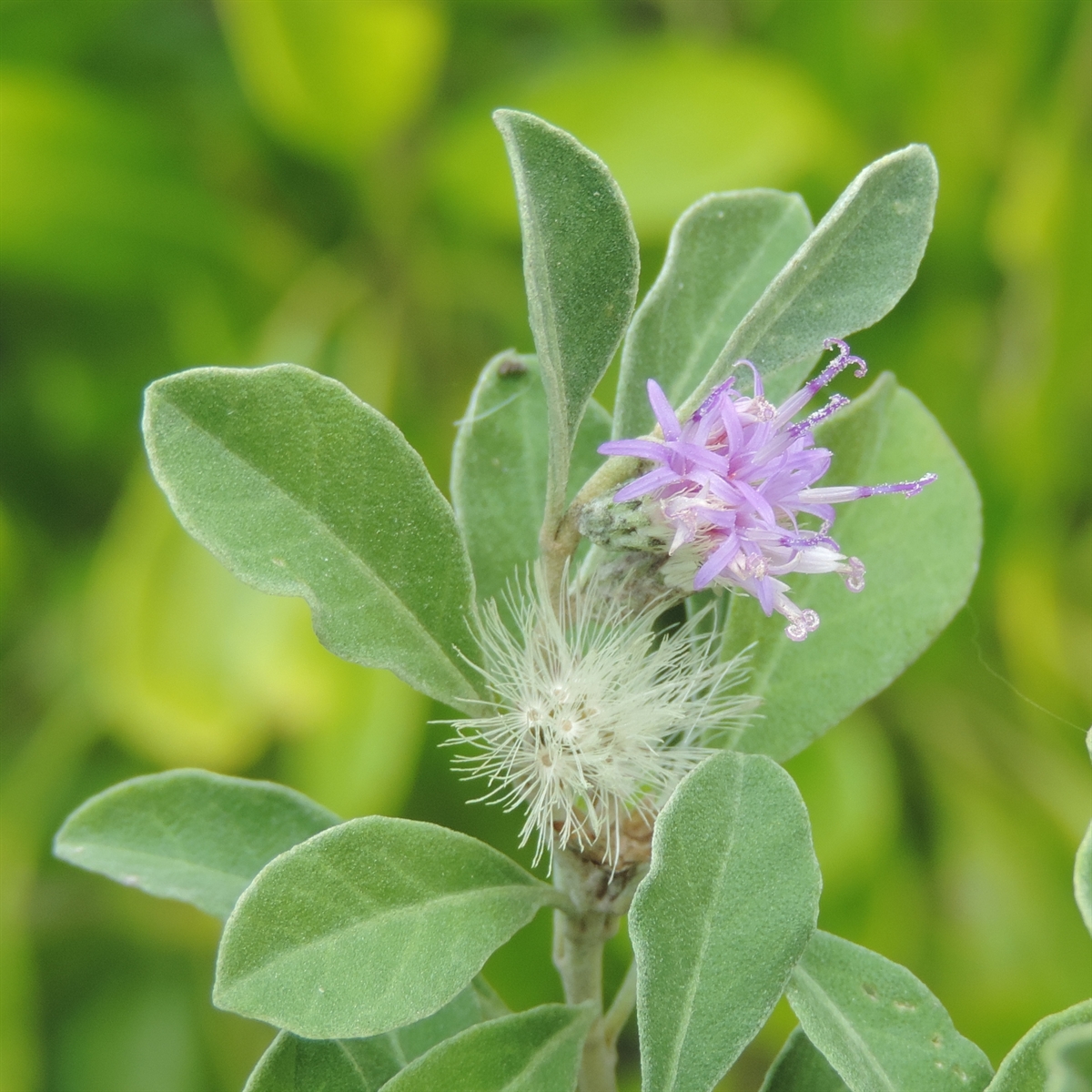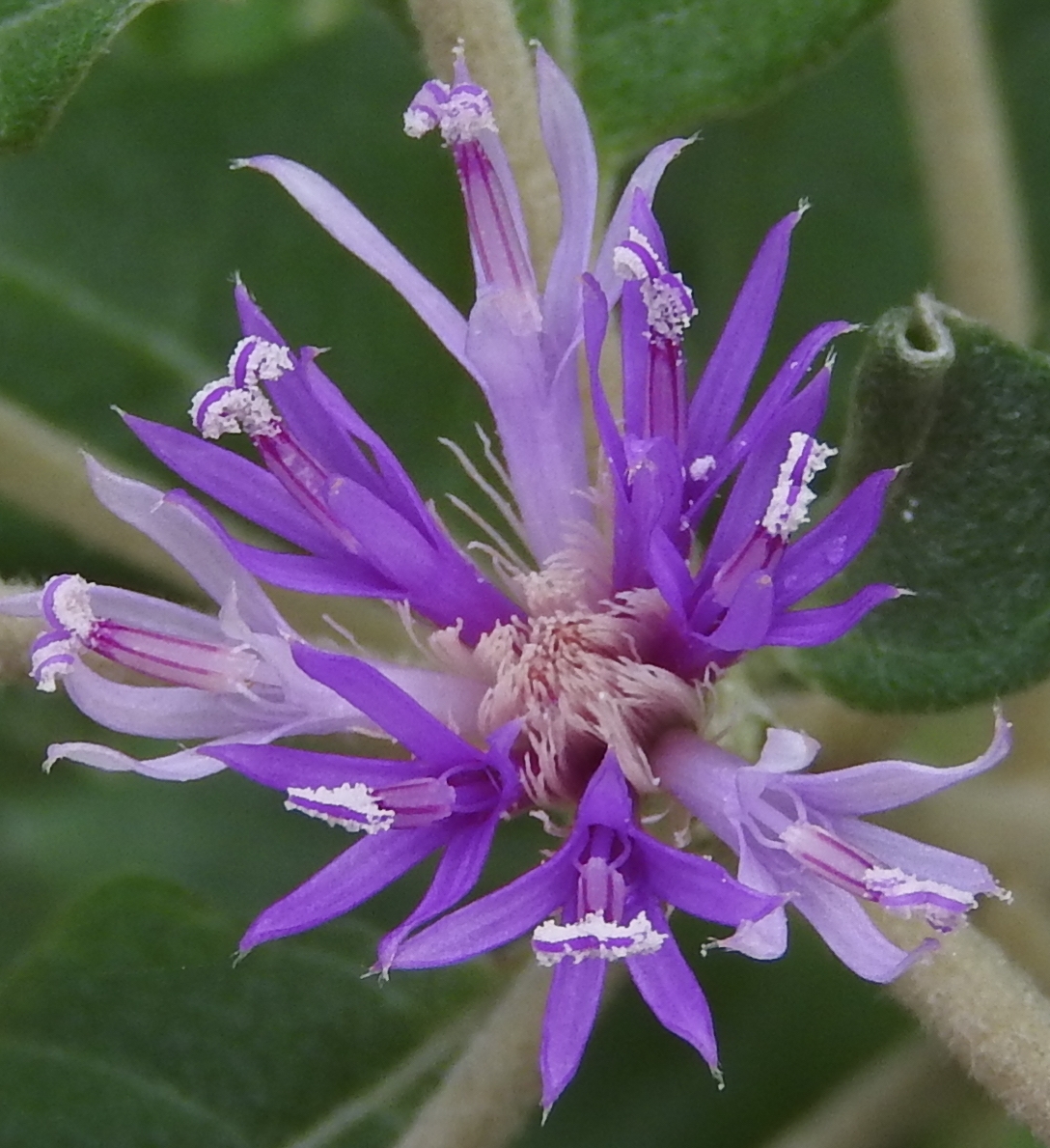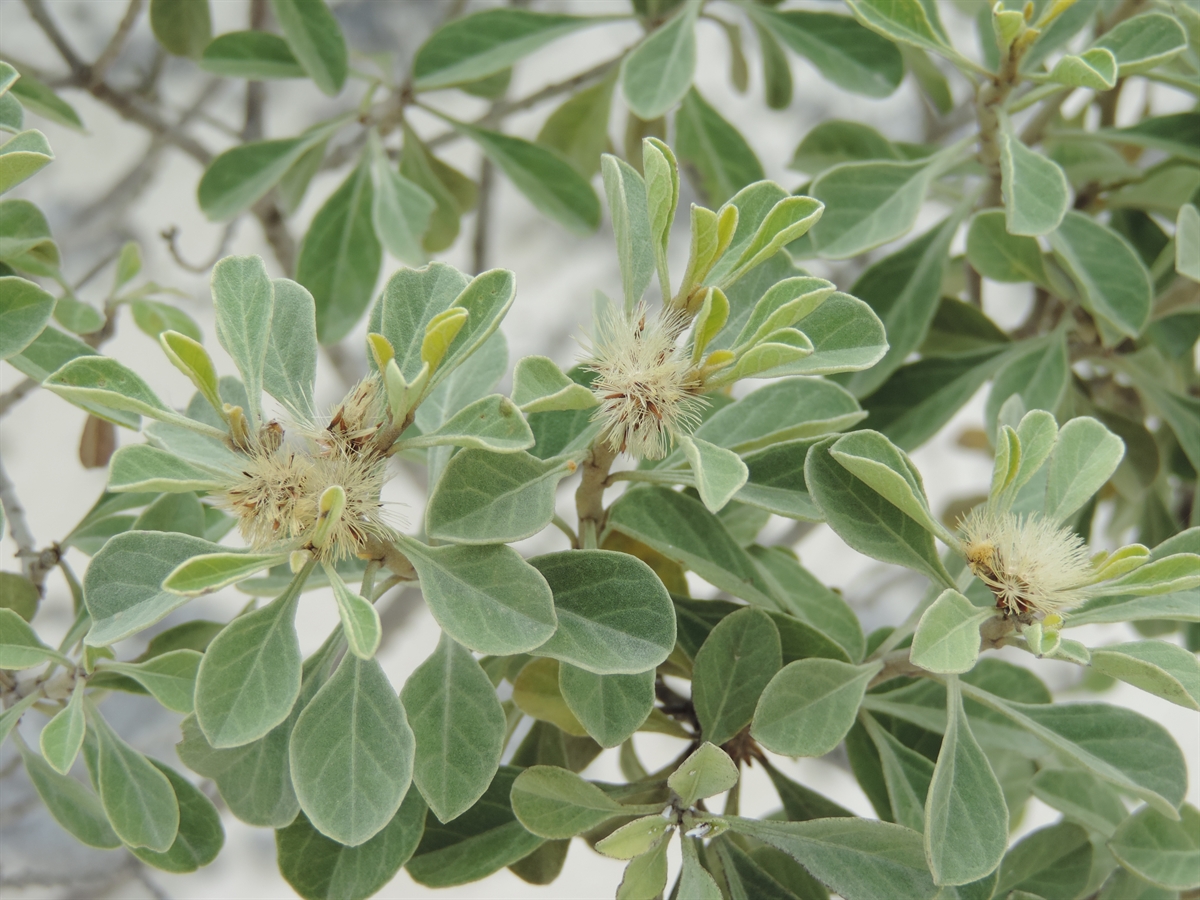Habit: Lepidaploa arbuscula is a perennial shrub up to 1.5 m in height (usually less than 75 cm) with pubescent stems. Leaves arranged alternately, oval to obovate to 3 cm in length and 2 cm wide, glabrous adaxially and glandular and pubescent abaxially, with an entire margin and mucronate leaf apex.
The complete, perfect, actinomorphic (disc) flowers are arranged in sessile axillary heads. The heads are subtended by a series of involucral bracts (phyllaries). The calyx is modified as a ring of small projections (pappus). The corolla with 5 fused, purple pink petals. There are 5 stamens fused at their base. The ovary is inferior with a single locule and seed. The fruit is an achene at maturity that retains the modified calyx (pappus).
Habitat: Lepidaploa arbuscula grows in Pine Woodlands in the northern islands and in sand and limestone substrate Dry Broadleaf Evergreen Formation – Shrublands (scrubland coppice) in the southern islands.
Distribution: Lepidaploa arbuscula is endemic to the Lucayan Archipelago occurring in the northwestern and southern island groupings.
Medicinal/Cultural/Economic usage: Lepidaploa arbuscula is not known to be used medicinally in the Lucayan Archipelago.



